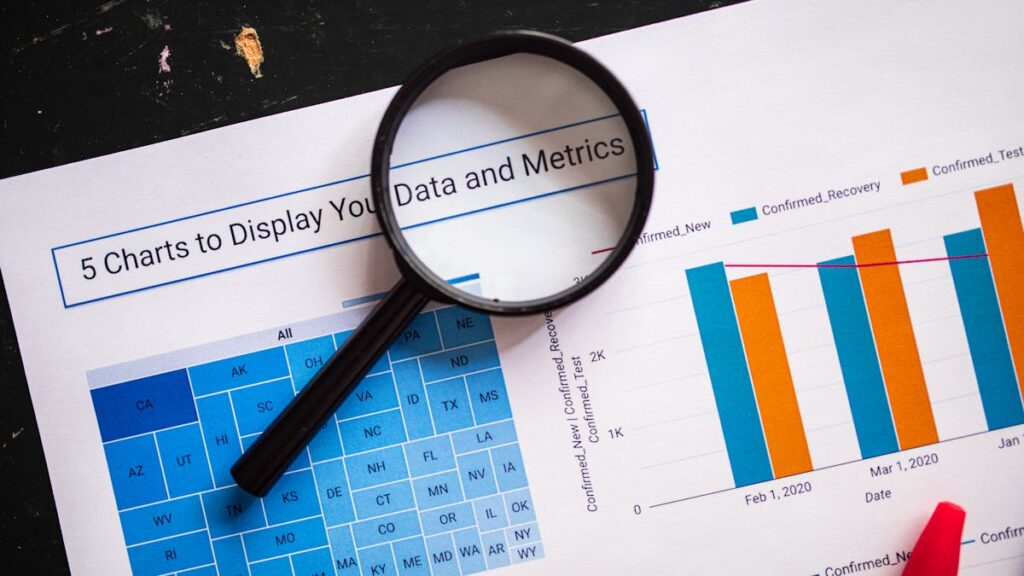Let’s cut to the chase.
If you’re running a lending business, accurate financial projections aren’t just nice to have – they’re critical to your survival and growth.
I’ve seen too many lending businesses crash and burn because they couldn’t forecast their future accurately.
But here’s the thing: creating reliable financial projections isn’t rocket science.
With the right approach and tools, you can map out your financial future with confidence.
In this post, I’m going to walk you through the exact process I use to create rock-solid financial projections for lending businesses.
We’ll cover everything from gathering historical data to performing sensitivity analysis.
By the end, you’ll have a clear roadmap for creating your own lending business financial projections template.
Let’s dive in.
What You’ll Need to Create Accurate Financial Projections for Your Lending Business

Before we start, let’s make sure you’ve got all your ducks in a row.
Here’s what you’ll need to create accurate financial projections for your lending business:
- Historical financial data: At least 2-3 years of past financial statements (income statements, balance sheets, cash flow statements)
- Industry benchmarks: Data on average performance metrics in the lending industry
- Market research: Information on current and projected market trends
- Economic indicators: Key economic data that could impact your business (e.g., interest rates, GDP growth)
- Lending business financial projections template: A spreadsheet or financial modeling software to input and calculate your projections
- Time and focus: This isn’t a quick task – set aside several hours of uninterrupted time
- Team input: Insights from key team members in operations, sales, and risk management
- Realistic mindset: Be prepared to challenge your assumptions and face potential harsh realities
Top tools I recommend:
- For spreadsheets: Microsoft Excel or Google Sheets
- For financial modeling: Adaptive Insights or Anaplan
- For market research: IBISWorld or Statista
Remember, the quality of your projections is only as good as the data and assumptions you put into them.
Garbage in, garbage out.
So take the time to gather comprehensive, accurate information before you start.
Step-by-Step Instructions to Create Accurate Financial Projections for Your Lending Business

1. Gather Historical Data
First things first: you need to know where you’ve been to figure out where you’re going.
Start by collecting at least 2-3 years of historical financial data for your lending business.
This includes:
- Income statements
- Balance sheets
- Cash flow statements
- Key performance indicators (KPIs) specific to lending (e.g., loan origination volume, default rates, net interest margin)
Why this matters: Historical data provides the foundation for your projections.
It reveals trends, seasonality, and the overall financial health of your business.
Pro tip: Don’t just look at the numbers – analyze the stories behind them.
What caused significant changes year-over-year?
Were there one-time events that skewed the data?
Understanding these nuances will help you make more accurate projections.
Warning: Be wary of using historical data that’s more than 5 years old.
The lending industry evolves rapidly, and older data may not reflect current market conditions.
2. Analyze Market Trends
Now that you’ve got your internal data, it’s time to look outward.
Analyze current and projected market trends that could impact your lending business.
This includes:
- Overall economic conditions
- Interest rate projections
- Regulatory changes
- Technological disruptions in the lending industry
- Shifts in consumer borrowing behavior
Why this matters: Your business doesn’t operate in a vacuum.
External factors can have a massive impact on your future performance.
Ignoring them is like trying to navigate with blinders on.
Pro tip: Don’t just rely on general economic forecasts.
Dig into trends specific to your niche in the lending industry.
For example, if you focus on small business loans, research projections for small business growth and credit demand.
Warning: Be cautious of overly optimistic industry projections.
It’s better to err on the side of conservatism in your financial forecasts.
3. Project Revenue
Now we’re getting to the meat of your lending business financial projections template.
Start by projecting your revenue streams.
For a lending business, this typically includes:
- Interest income
- Origination fees
- Late payment fees
- Other service charges
Here’s how to do it:
- Analyze your historical loan origination volume and growth rates
- Consider market trends and your business strategy to project future loan volume
- Estimate interest rates based on economic forecasts and your pricing strategy
- Calculate projected interest income by applying estimated rates to projected loan volumes
- Forecast fee income based on historical data and projected loan volume
Why this matters: Revenue is the lifeblood of your business.
Accurate revenue projections are crucial for planning everything from staffing to marketing budgets.
Pro tip: Break down your revenue projections by product line or customer segment.
This granularity will give you deeper insights and make it easier to adjust projections as market conditions change.
Warning: Don’t fall into the trap of projecting continuous, aggressive growth.
Be realistic about market saturation and competition.
4. Estimate Expenses
With your revenue projections in place, it’s time to tackle the other side of the equation: expenses.
For a lending business, key expense categories typically include:
- Interest expense on borrowed funds
- Salaries and benefits
- Marketing and customer acquisition costs
- Technology and infrastructure
- Loan loss provisions
- Regulatory compliance costs
Here’s how to estimate expenses:
- Start with your historical expense data
- Identify fixed vs. variable costs
- Project variable costs based on your revenue forecasts
- Estimate fixed costs, accounting for planned changes (e.g., office expansion, new hires)
- Research industry benchmarks to ensure your expense ratios are in line with peers
- Don’t forget to factor in inflation
Why this matters: Accurate expense projections are critical for calculating profitability and managing cash flow.
Underestimating expenses is a quick way to find yourself in a financial crunch.
Pro tip: Pay special attention to loan loss provisions.
In a lending business, this can be one of the most significant and volatile expenses.
Use historical default rates and economic projections to estimate future loan losses.
Warning: Don’t overlook small expenses.
They can add up quickly and erode your profitability if not properly accounted for.
5. Create Cash Flow Projections
Now that you’ve projected revenue and expenses, it’s time to bring it all together in a cash flow projection.
This is where the rubber meets the road in your lending business financial projections template.
Here’s how to create cash flow projections:
- Start with your projected net income (revenue minus expenses)
- Add back non-cash expenses like depreciation and amortization
- Account for changes in working capital (e.g., increases in accounts receivable or decreases in accounts payable)
- Factor in capital expenditures (e.g., new equipment or software purchases)
- Include debt repayments and any planned financing activities
- Project cash inflows from loan repayments and outflows for new loan originations
Why this matters: Cash is king, especially in a lending business.
Your cash flow projections will help you anticipate potential liquidity issues and plan for capital needs.
Pro tip: Create multiple cash flow scenarios – base case, best case, and worst case.
This will help you prepare for different outcomes and develop contingency plans.
Warning: Be conservative in your cash flow projections.
It’s better to have more cash than you need than to come up short.
6. Build Balance Sheet Projections
The final piece of the financial projection puzzle is your balance sheet.
This will give you a snapshot of your lending business’s projected financial position at future points in time.
Here’s how to build balance sheet projections:
- Start with your current balance sheet
- Project changes in assets based on your cash flow and growth projections (e.g., increases in loan portfolio)
- Estimate changes in liabilities (e.g., increases in debt to fund loan growth)
- Calculate projected shareholders’ equity based on retained earnings and any planned capital raises
- Ensure your balance sheet balances (Assets = Liabilities + Equity)
Why this matters: Balance sheet projections help you understand how your business’s financial structure will evolve over time.
They’re crucial for assessing long-term financial health and planning for future capital needs.
Pro tip: Pay close attention to your projected debt-to-equity ratio.
This is a key metric that lenders and investors will look at when assessing your business’s financial stability.
Warning: Don’t forget to account for loan loss reserves on your balance sheet.
This is a critical item for lending businesses that directly impacts your equity position.
7. Perform Sensitivity Analysis
You’ve now got a complete set of financial projections.
But here’s the truth: no projection is perfect.
That’s why the final step is to perform sensitivity analysis.
Here’s how to do it:
- Identify key variables that could significantly impact your projections (e.g., interest rates, default rates, loan volume)
- Create best-case and worst-case scenarios by adjusting these variables
- Analyze how changes in these variables affect your overall financial projections
- Identify any “breaking points” where your business would face significant financial stress
Why this matters: Sensitivity analysis helps you understand the potential range of outcomes for your business.
It allows you to prepare for different scenarios and develop contingency plans.
Pro tip: Use this analysis to identify the most critical drivers of your financial performance.
These are the areas you should focus on monitoring and managing most closely.
Warning: Don’t get paralyzed by the range of potential outcomes.
Use this analysis to inform your decision-making, but remember that action beats inaction in business.
Tips To Successfully Create Accurate Financial Projections for Your Lending Business

Creating accurate financial projections for your lending business isn’t just about crunching numbers.
It’s about developing a deep understanding of your business and the market you operate in.
Here are some tips to help you succeed:
- Stay grounded in reality
Don’t let optimism cloud your judgment.
Base your projections on solid data and realistic assumptions. - Update regularly
Financial projections aren’t a one-and-done exercise.
Review and update them at least quarterly. - Involve your team
Don’t create projections in a vacuum.
Get input from key team members in different departments. - Use multiple scenarios
Always create best-case, worst-case, and most-likely scenarios. - Focus on cash flow
In a lending business, cash is king.
Pay special attention to your cash flow projections. - Benchmark against competitors
Compare your projections to industry averages to ensure you’re not wildly off base. - Document your assumptions
Clearly state the assumptions behind your projections.
This makes it easier to adjust them as conditions change. - Use visual aids
Charts and graphs can help you spot trends and anomalies more easily than raw numbers. - Plan for contingencies
Use your projections to identify potential risks and develop mitigation strategies. - Seek outside input
Consider having a financial advisor or industry expert review your projections for a fresh perspective.
Remember, the goal of your lending business financial projections template isn’t to predict the future with 100% accuracy.
It’s to give you a roadmap for decision-making and a tool for monitoring your business’s financial health.
Common Mistakes to Avoid
I’ve seen countless lending businesses stumble when it comes to financial projections.
Here are some common pitfalls to watch out for:
- Overly optimistic growth projections
It’s natural to be excited about your business, but unchecked optimism can lead to unrealistic projections.
Always challenge your growth assumptions. - Ignoring economic cycles
The lending industry is highly sensitive to economic fluctuations.
Failing to account for potential downturns can leave you unprepared. - Underestimating expenses
It’s easy to overlook or underestimate costs, especially as you scale.
Be thorough in your expense projections. - Neglecting cash flow
Profitability doesn’t always equal good cash flow.
Make sure you’re projecting both. - Failing to account for regulatory changes
The lending industry is heavily regulated.
Stay informed about potential regulatory shifts that could impact your business. - Ignoring competition
Your projections should account for competitive pressures and potential new entrants to the market. - Using outdated data
The lending landscape changes quickly.
Make sure you’re using the most current data available. - Overlooking technology trends
Fintech innovations can disrupt traditional lending models.
Factor technological changes into your projections. - Not stress-testing your projections
Failing to consider worst-case scenarios can leave you vulnerable to unexpected shocks. - Treating projections as set-in-stone
Your projections should be living documents, regularly updated as conditions change.
Avoiding these mistakes will help ensure your lending business financial projections template is a valuable tool for guiding your business, not a misleading fantasy.
Troubleshooting Issues With Your Projections
Even with the best preparation, you might encounter challenges when creating or using your financial projections.
Here are some common issues and how to address them:
- Problem: Your projections consistently miss the mark
Solution: Review your assumptions and data sources.
Are you using reliable, up-to-date information?
Are your assumptions realistic?
Consider seeking an outside perspective to identify blind spots. - Problem: Your cash flow projections don’t align with actual cash position
Solution: Double-check your timing assumptions for cash inflows and outflows.
In lending, there’s often a lag between when a loan is made and when payments start coming in.
Make sure you’re accurately reflecting these timing differences. - Problem: Your expense projections are consistently too low
Solution: Look for hidden or overlooked costs.
Are you factoring in all overhead expenses?
What about costs that increase as you scale, like customer service or compliance? - Problem: Your revenue projections seem overly optimistic
Solution: Challenge your growth assumptions.
Are you factoring in market saturation, increased competition, or potential economic downturns?
Consider creating more conservative scenarios. - Problem: Your balance sheet doesn’t balance
Solution: This usually indicates an error in your calculations.
Carefully review each line item and ensure all changes in assets, liabilities, and equity are accounted for. - Problem: Your projections don’t align with industry benchmarks
Solution: If your projections are significantly different from industry norms, it could indicate either an error or a unique aspect of your business model.
Carefully review your assumptions and be prepared to explain any major deviations. - Problem: You’re struggling to project loan loss provisions
Solution: This is a common challenge in lending.
Review historical default rates, consider economic projections, and potentially consult with a risk management expert.
Remember, troubleshooting is a normal part of the financial projection process.
Don’t get discouraged if you encounter issues – view them as opportunities to refine and improve your lending business financial projections template.
Alternative Ways to Create Accurate Financial Projections for Your Lending Business

While we’ve focused on creating comprehensive financial projections, there are alternative approaches that might be suitable depending on your specific needs or circumstances.
Here are some variations to consider:
Top-down vs. Bottom-up Projections
- Top-down: Start with market size and work backwards to your business
- Bottom-up: Build projections based on detailed operational metrics
- When to use: Top-down can be useful for new businesses or entering new markets. Bottom-up is often more accurate for established businesses.
Short-term vs. Long-term Projections
- Short-term: Focus on detailed monthly or quarterly projections for the next 1-2 years
- Long-term: Create higher-level annual projections for 3-5 years out
- When to use: Short-term for operational planning, long-term for strategic planning and investor presentations
Scenario-based Projections
- Create multiple sets of projections based on different scenarios (e.g., rapid growth, steady state, market downturn)
- When to use: Particularly useful in uncertain economic conditions or when considering major strategic shifts
Driver-based Modeling
- Build projections around key business drivers (e.g., loan origination volume, interest rates) rather than line-item detail
- When to use: Helpful for quickly updating projections as key drivers change
- Use statistical modeling to create thousands of potential outcomes based on probability distributions of key variables
- When to use: When you need to understand the full range of potential outcomes and their probabilities
Rolling Forecasts
- Continuously update short-term forecasts (e.g., always maintaining a 12-month forward projection)
- When to use: In rapidly changing environments where annual budgets quickly become outdated
Zero-based Budgeting
- Build expense projections from zero each period, justifying every cost
- When to use: When you need to rigorously control costs or fundamentally rethink your business model
Each of these approaches has its strengths and weaknesses.
The key is to choose the method that best aligns with your business needs and decision-making processes.
Don’t be afraid to experiment with different approaches or combine elements from multiple methods.
The goal is to create a lending business financial projections template that provides actionable insights for your specific situation.
Final Thoughts
Creating accurate financial projections for your lending business isn’t just a box-checking exercise.
It’s a powerful tool that can drive your business forward.
We’ve covered a lot of ground in this post, from gathering historical data to performing sensitivity analysis.
We’ve discussed common pitfalls, troubleshooting tips, and alternative approaches.
But here’s the bottom line: the most important step is to actually do it.
Too many lending businesses operate in a fog of financial uncertainty.
They make decisions based on gut feel rather than data-driven projections.
Don’t be one of them.
Use the steps and strategies we’ve discussed to create your own lending business financial projections template.
It won’t be perfect, especially at first.
But it will give you a clearer picture of your financial future and help you make better decisions today.
Remember, financial projections are not about predicting the future with 100% accuracy.
They’re about understanding the range of possible outcomes and preparing for them.
They’re about identifying the key drivers of your business and focusing your energy where it matters most.
So take action.
Start building your financial projections today.
Your future self (and your bottom line) will thank you.
Read also:
- #6 Biggest Challenges Faced by Lending Businesses (and How to Solve Them)
- Latest Insurance Requirements for a Lending Business
- 7 Easy Steps to Starting a Lending Business Without Experience
- 7 Easy Customer Acquisition Strategies Every Lending Business Should Try
FAQ Section
Q: How often should I update my lending business financial projections?
A: At a minimum, you should update your projections quarterly. However, in rapidly changing environments, monthly updates may be necessary. The key is to review and adjust your projections whenever significant changes occur in your business or the market.
Q: What’s the most important metric to focus on in lending business projections?
A: While all metrics are important, cash flow is particularly critical for lending businesses. It’s possible to be profitable on paper but run into cash flow issues due to the timing of loan disbursements and repayments.
Q: How far into the future should I project?
A: Most businesses create detailed monthly projections for the next 12 months, quarterly projections for the following year, and annual projections for years 3-5. However, the appropriate timeframe can vary based on your business needs and industry dynamics.
Q: Should I use specialized software for financial projections?
A: While spreadsheet software like Excel can work well, specialized financial modeling software can offer advantages in terms of accuracy, collaboration, and scenario analysis. Consider your specific needs and budget when deciding.
Q: How do I account for economic uncertainty in my projections?
A: Use scenario analysis and sensitivity testing to model different economic conditions. Always include a “downside” scenario that assumes challenging economic conditions.
Q: What’s the best way to project loan loss provisions?
A: Start with historical default rates, adjust for current and projected economic conditions, and consider the specific risk profile of your loan portfolio. It’s often helpful to consult with risk management experts on this crucial metric.
Q: How detailed should my projections be?
A: The level of detail should align with your business needs and decision-making processes. Generally, near-term projections (e.g., next 12 months) should be more detailed than long-term projections.
Q: What if my actual results consistently differ from my projections?
A: This is a sign that you need to reassess your assumptions and projection methods. Look for patterns in the discrepancies and adjust your approach accordingly. Remember, the goal is continuous improvement, not perfect prediction.
Q: Should I include new products or markets in my projections?
A: Yes, if you have concrete plans to launch new products or enter new markets. However, it’s often helpful to create separate projections for these initiatives to understand their specific impact.
Q: How do I project interest rates for my lending business?
A: Consider economic forecasts, central bank policies, and your own pricing strategy. It’s often helpful to model multiple interest rate scenarios to understand the potential impact on your business.
Remember, creating financial projections is both an art and a science. The more you practice and refine your approach, the more valuable your lending business financial projections template will become as a decision-making tool.




